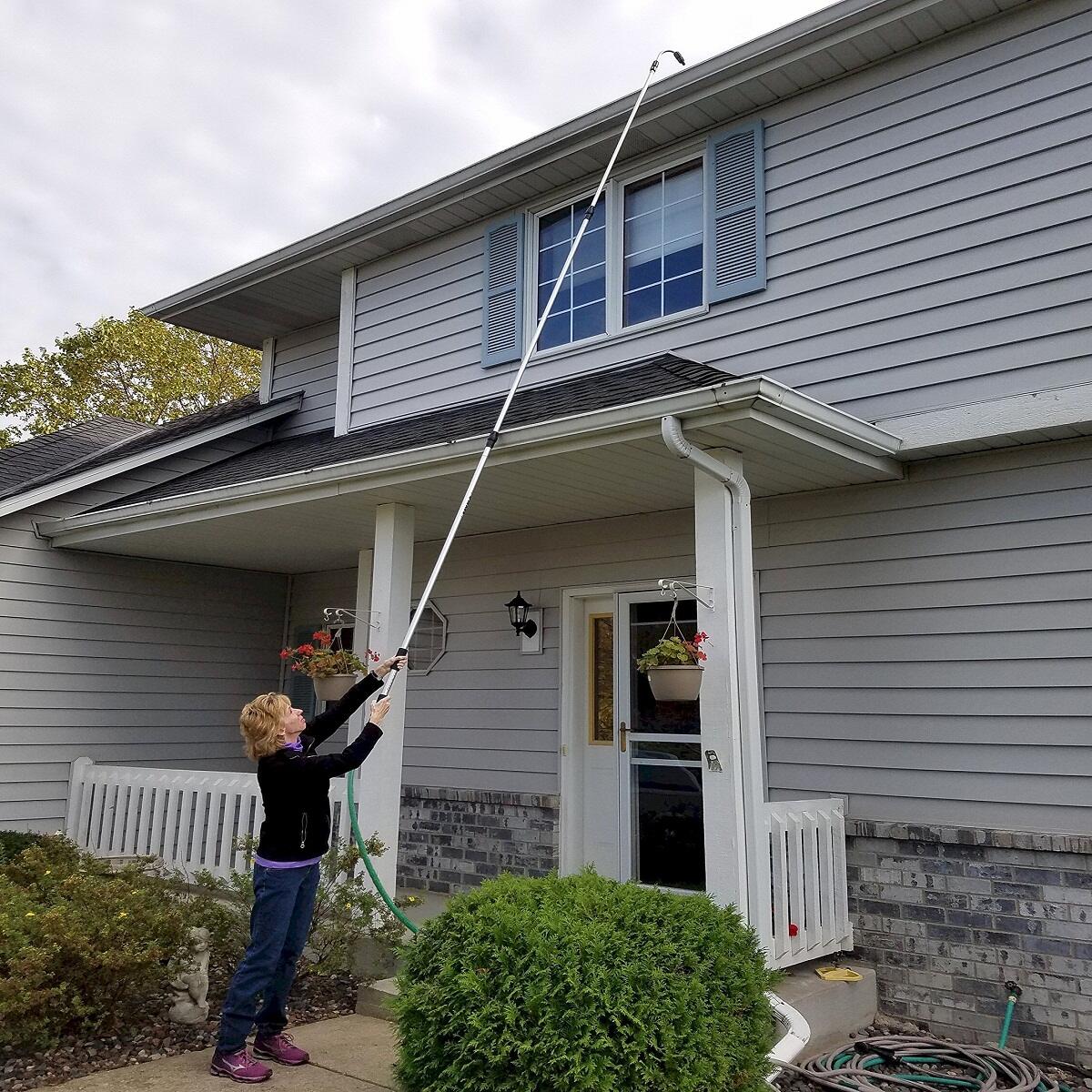

Articles
How To Clean Out Gutters From The Ground
Modified: January 18, 2024
Learn how to clean out gutters from the ground with these helpful articles. Prevent clogs and keep your gutters clear of debris for proper drainage.
(Many of the links in this article redirect to a specific reviewed product. Your purchase of these products through affiliate links helps to generate commission for Storables.com, at no extra cost. Learn more)
Introduction
Gutters play a crucial role in maintaining the structural integrity of your home by directing rainwater away from the roof and foundation. However, over time, gutters can become clogged with debris such as leaves, twigs, and dirt, causing them to clog and obstruct the flow of water.
Cleaning out gutters is an essential part of home maintenance, as neglecting this task can lead to various problems including water damage, mold growth, and even structural issues. While many people opt to hire professionals for gutter cleaning, it is possible to clean out gutters from the ground with a few basic tools and supplies.
In this article, we will guide you through the steps of cleaning out gutters from the ground. We will also discuss the necessary tools and supplies, safety precautions to consider, and how to properly inspect and repair gutters. By following these steps, you can maintain the functionality of your gutters and protect your home from potential damage.
Before we dive into the process, let’s take a look at the tools and supplies you will need for cleaning out gutters from the ground.
Key Takeaways:
- Regularly cleaning and maintaining gutters from the ground using the right tools and safety precautions can prevent water damage, mold growth, and structural issues, safeguarding your home and preserving its value.
- Assessing, clearing debris, flushing with water, and inspecting for damage are essential steps in the gutter cleaning process. Prioritize safety, and consider professional help if needed for a well-functioning gutter system.
Read more: How To Clean Gutters Out
Tools and Supplies Needed
Cleaning out gutters from the ground requires a few essential tools and supplies. Before you begin the process, make sure you have the following items on hand:
- Gutter scoop: A gutter scoop is a specialized tool designed to remove debris from gutters. It usually has a curved shape to fit inside the gutter and a scooping mechanism to collect the debris.
- Gutter vacuum or leaf blower: A gutter vacuum or leaf blower can be used to blow or suck out the debris from the gutters. This tool is especially useful for clearing out leaves and small twigs.
- Extension pole: An extension pole is necessary to reach the gutters from the ground. Make sure to choose a sturdy and adjustable pole that can extend to the desired length.
- Water hose with spray nozzle: A water hose with a spray nozzle attachment is needed to flush out any remaining debris and clean the gutters thoroughly.
- Garden gloves: It’s essential to protect your hands while cleaning the gutters. Wear sturdy garden gloves to shield your hands from debris and potential sharp edges.
- Ladder stabilizer (optional): If you need to access higher areas or have uneven ground, a ladder stabilizer can provide extra stability and prevent accidents.
- Goggles and dust mask: To protect your eyes from flying debris and breathe in dust particles, wear goggles and a dust mask during the cleaning process.
Having these tools and supplies ready before you start cleaning out your gutters will ensure a smoother and more efficient process.
Now that you have gathered the necessary tools and supplies, it’s time to go over some important safety precautions to keep in mind before cleaning out the gutters from the ground.
Safety Precautions
While cleaning out gutters from the ground may seem like a relatively straightforward task, it is important to prioritize safety to prevent accidents and injuries. Follow these safety precautions before and during the gutter cleaning process:
- Inspect the area: Before you begin, assess the area around your gutters for any potential hazards or obstacles, such as loose wires, overhanging branches, or slippery surfaces. Clear these hazards to ensure a safe working environment.
- Use a sturdy ladder: If you need to access higher areas, use a sturdy ladder with a stabilizer, ensuring it is on level ground and secured to prevent it from tipping over.
- Wear protective gear: Put on goggles and a dust mask to shield your eyes and lungs from debris. Additionally, wear sturdy garden gloves to protect your hands from sharp edges or potential injuries.
- Be cautious of power lines: If there are power lines near your gutters, be mindful of their location and avoid coming into contact with them. Keep a safe distance to prevent the risk of electric shock.
- Work in pairs: It is always safer to have someone else present while cleaning out gutters. They can help stabilize the ladder, pass tools, or provide assistance in case of an emergency.
- Take breaks and stay hydrated: Gutter cleaning can be physically demanding, so make sure to take regular breaks and stay hydrated to prevent exhaustion or heat-related illnesses.
- Follow manufacturer instructions: When using tools and equipment such as leaf blowers or vacuum cleaners, follow the manufacturer’s instructions and safety guidelines at all times.
By following these safety precautions, you can significantly reduce the risk of accidents and injuries while cleaning out your gutters from the ground. Now, let’s move on to the step-by-step process of cleaning out the gutters.
Step 1: Assessing the Gutters
Before you start clearing out the gutters, it’s essential to assess their condition and identify any potential issues. This step will help you determine if any repairs or additional maintenance tasks are needed. Here’s how to assess your gutters:
- Inspect the exterior: Begin by walking around your home and visually inspecting the exterior of the gutters. Look for signs of damage, such as sagging, rust, or loose connections. Also, check if there are any visible blockages or debris.
- Check for water stains: Inside your home, examine the ceilings and walls located near the gutters for any signs of water stains. These stains may indicate leaks or overflow problems and should be addressed promptly.
- Assess drainage issues: Observe how the water flows from the gutters during rain or by using a hose. Ensure that the water is being properly directed away from the foundation and is not pooling or causing erosion.
- Examine downspouts: Inspect the downspouts for clogs, dents, or disconnections. Clear any debris or obstructions and ensure they are securely attached to the gutters and directing water away from the house.
- Take note of repairs needed: Make a list of any repairs or maintenance tasks that need to be addressed, such as replacing damaged sections, resealing joints, or reinforcing brackets. This list will guide you during the gutter cleaning process.
Assessing the gutters before cleaning helps to identify underlying issues and ensures you can take the necessary steps to maintain their functionality. Once you have assessed the gutters, you can proceed to the next step of clearing out the debris using a gutter scoop.
Step 2: Clearing Debris Using a Gutter Scoop
Now that you have assessed the gutters, it’s time to start clearing out the debris using a gutter scoop. A gutter scoop is a specialized tool designed to remove leaves, twigs, and other debris from the gutters. Follow these steps:
- Put on your protective gear: Before you begin, make sure you are wearing garden gloves, goggles, and a dust mask to protect yourself from debris.
- Position yourself carefully: Stand on a stable surface and position yourself near a section of the gutters. If possible, use an extension pole to reach the gutters from the ground.
- Start scooping: Insert the gutter scoop into the gutter, and using a sweeping motion, remove the debris. Scoop out as much as possible, depositing it into a bucket or bag for easy disposal.
- Work your way along the gutters: Move along the length of the gutters, continuing to scoop out any debris you come across. Pay particular attention to problem areas identified during the assessment stage.
- Remove stubborn debris: If you encounter stubborn or compacted debris, use the gutter scoop to loosen it or break it apart. Repeat the scooping process until the gutters are reasonably clear.
Clearing out the debris using a gutter scoop is an effective way to physically remove the buildup in the gutters. However, using a gutter scoop may be time-consuming, especially for larger or heavily clogged gutters. In such cases, you may want to consider using a gutter vacuum or leaf blower for a more efficient cleanup, which we will discuss in the next step.
Use a gutter cleaning tool with a telescoping pole to reach and clean out gutters from the ground. This will help you avoid the risks of using a ladder.
Read more: How To Clean Gutters From The Roof
Step 3: Using a Gutter Vacuum or Leaf Blower
If you have larger or heavily clogged gutters, using a gutter vacuum or leaf blower can be a quicker and more efficient method to clear out the debris. These tools utilize air pressure to blow or suck the debris out of the gutters. Here’s how to use them:
- Choose the right tool: Select either a gutter vacuum or a leaf blower, depending on your preference and availability. Ensure that it has sufficient power to handle the debris in your gutters.
- Attach the extension wand: If your gutter vacuum or leaf blower comes with an extension wand, attach it securely. This will allow you to reach the gutters from the ground without needing a ladder.
- Position yourself strategically: Stand on a stable surface and position yourself near a section of the gutters. Hold the extended tool at a comfortable angle to reach the gutters effectively.
- Blow or suck the debris: Turn on the leaf blower or gutter vacuum, and direct the airflow towards the debris in the gutters. If using a leaf blower, aim the nozzle at an angle to blow the debris out of the gutters and onto the ground. If using a gutter vacuum, use the suction power to collect the debris into a bag or container.
- Work your way along the gutters: Move along the length of the gutters, using the tool to blow or suck out the debris. Pay attention to problem areas and ensure that you thoroughly clean the entire gutter system.
Using a gutter vacuum or leaf blower can significantly speed up the cleaning process and remove more stubborn debris. However, be cautious not to blow the debris onto other areas of your property or into the neighbor’s yard.
Once you have successfully cleared the debris from the gutters, it’s time to move on to the next step: flushing the gutters with water to ensure they are thoroughly cleaned.
Step 4: Flushing the Gutters with Water
After removing the debris from the gutters, it is important to flush them with water to ensure they are thoroughly cleaned and free from any remaining small particles or residue. Flushing the gutters will also help identify any clogs or blockages that may have been missed during the earlier cleaning process. Here’s how to flush the gutters with water:
- Obtain a water hose with a spray nozzle: Use a water hose with a spray nozzle attachment to provide a strong and controlled stream of water.
- Position yourself strategically: Stand near a downspout and position the water hose at the opposite end of the gutter system.
- Turn on the water: Turn on the water and adjust the spray nozzle to a high-pressure setting. Start at the end of the gutters farthest from the downspout.
- Flush the gutters: Direct the spray of water along the length of the gutters, moving towards the downspout. This will help push any remaining debris towards the downspout, effectively clearing the gutters.
- Check for proper water flow: As you flush the gutters, observe if the water is flowing freely towards the downspout without any blockages or overflow. If you notice any issues, use the water hose to manually clear the obstruction.
- Inspect the downspouts: Once the gutters are thoroughly flushed, inspect the downspouts to ensure they are clear and functioning correctly. Use the water hose to flush out any debris if necessary.
Flushing the gutters with water is an important step to ensure they are completely clean and ready to effectively channel rainwater away from your home. By thoroughly inspecting the flow of water, you can address any issues promptly and avoid potential water damage.
Now that your gutters are cleaned and flushed, it is time for the final step: inspecting and repairing any damage that may have been identified during the cleaning process.
Step 5: Inspecting and Repairing Gutters
Now that you have cleaned out and flushed the gutters, it’s crucial to inspect them for any damage or issues that may require repair. By identifying and addressing these problems, you can ensure the longevity and functionality of your gutter system. Follow these steps to inspect and repair your gutters:
- Check for leaks: Inspect the gutter joints and seams for any signs of leaks or separation. If you notice any leaks, apply gutter sealant or replace the damaged section of the gutter.
- Look for sagging or misalignment: Check if the gutters are properly aligned and have a slight slope towards the downspouts. Address any sagging or misalignment by adjusting or reinforcing the gutter brackets.
- Clear remaining blockages: While cleaning the gutters, some small debris may have been missed. Use a plumber’s snake or a high-pressure water hose to clear any remaining blockages in the downspouts or underground drainage pipes.
- Inspect the fascia boards: The fascia boards behind the gutters may have suffered damage due to water exposure. Replace any rotting or damaged fascia boards to ensure the structural integrity of your home.
- Consider gutter guards: If you frequently experience clogged gutters, consider installing gutter guards or leaf guards to prevent future debris buildup and reduce the frequency of gutter cleaning.
Regularly inspecting and repairing your gutters will help prevent potential water damage to your home and extend the lifespan of the gutter system. Take the time to address any issues promptly to maintain the functionality of your gutters throughout the year.
With a clear understanding of how to assess, clean, flush, and inspect gutters from the ground, you are equipped with the knowledge to keep your gutters in optimal condition. By following these steps and being proactive with your gutter maintenance, you can protect your home from water damage and preserve its overall value.
Keep in mind that if you feel uncomfortable or unsure about performing any of these tasks yourself, it is always advisable to consult a professional gutter cleaning service to ensure the job is done safely and effectively.
Remember, regular gutter maintenance is key to preventing potential issues and protecting your home investment. By dedicating some time to clean out your gutters, you can enjoy a well-functioning gutter system and the peace of mind that comes with it.
Stay proactive, stay safe, and happy gutter cleaning!
Conclusion
Cleaning out gutters from the ground is a task that homeowners can tackle themselves with the right tools, supplies, and knowledge. By following the step-by-step process outlined in this article, you can effectively clean and maintain your gutters, ensuring they function properly and protect your home from potential damage.
Starting with assessing the condition of the gutters, you can identify any repairs or maintenance tasks that may be needed. Clearing out the debris using a gutter scoop or a gutter vacuum/leaf blower helps remove the bulk of the buildup. Flushing the gutters with water ensures they are thoroughly cleaned and any remaining debris is cleared away.
But the job doesn’t end there. Inspecting the gutters for damage and addressing any issues promptly is essential to maintain their functionality. By repairing leaks, realigning sagging gutters, and considering the installation of gutter guards, you can enhance the efficiency and longevity of your gutter system.
Remember to prioritize safety throughout the gutter cleaning process, using protective gear and taking necessary precautions to prevent accidents and injuries. If you feel uncomfortable or unsure about performing the task yourself, don’t hesitate to seek professional help.
In conclusion, regular gutter maintenance is vital to safeguarding your home from water damage, mold growth, and structural issues. By dedicating some time to clean out your gutters from the ground, you can ensure the proper functioning of your gutters, protecting your home and preserving its value.
So, get your tools ready, follow the steps outlined in this article, and give your gutters the care they deserve. Happy cleaning!
Frequently Asked Questions about How To Clean Out Gutters From The Ground
Was this page helpful?
At Storables.com, we guarantee accurate and reliable information. Our content, validated by Expert Board Contributors, is crafted following stringent Editorial Policies. We're committed to providing you with well-researched, expert-backed insights for all your informational needs.

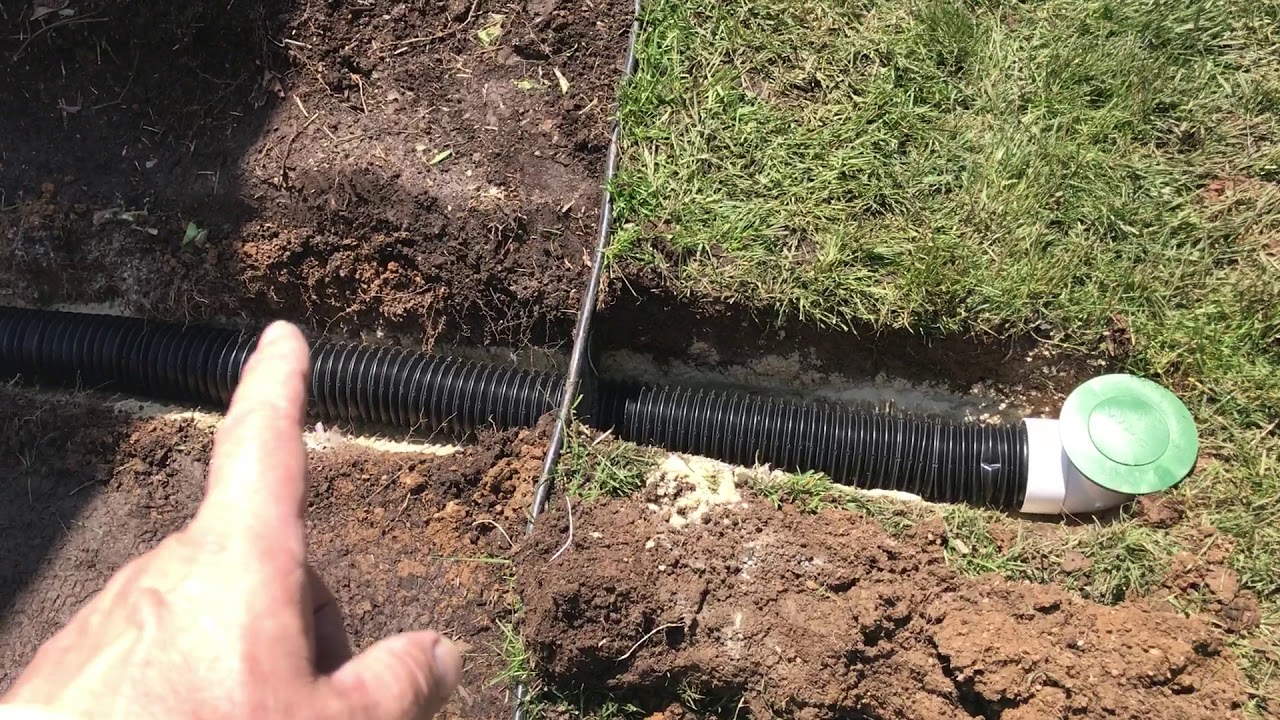
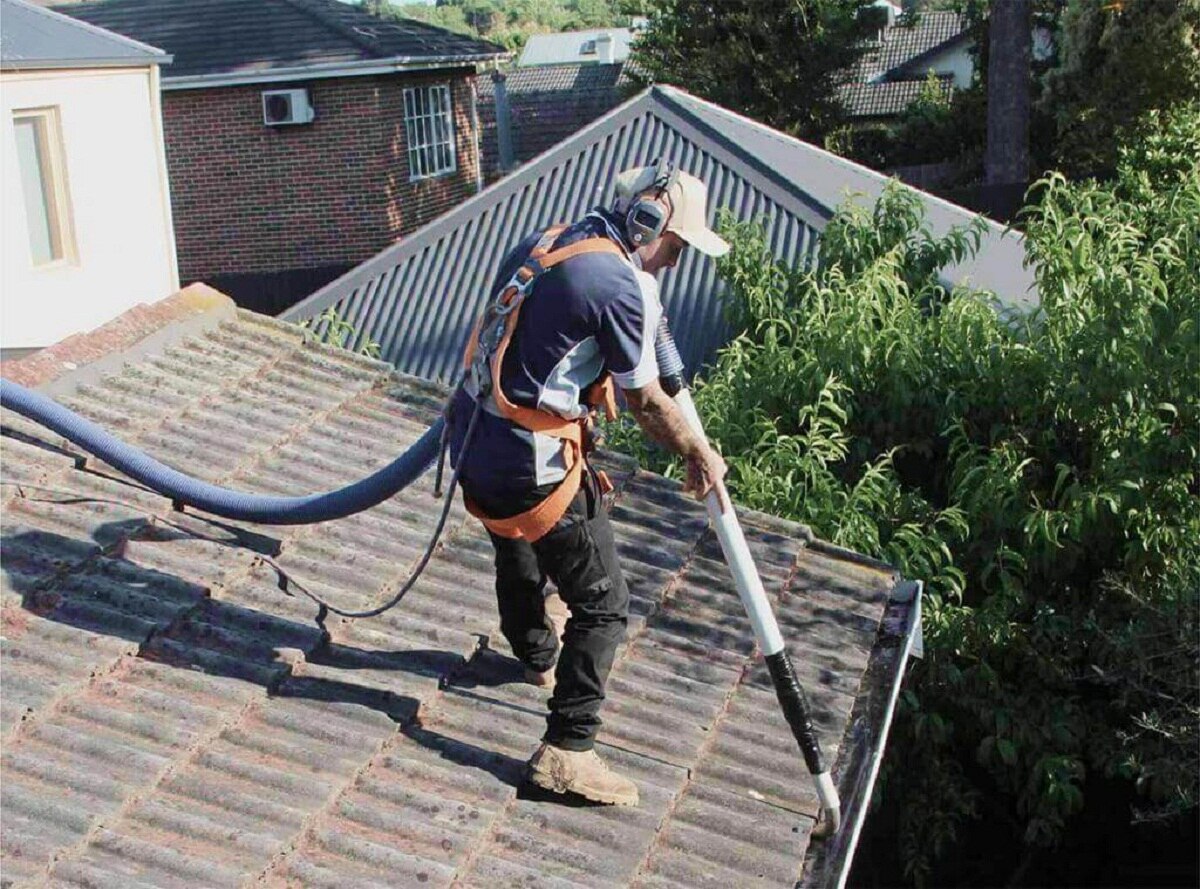
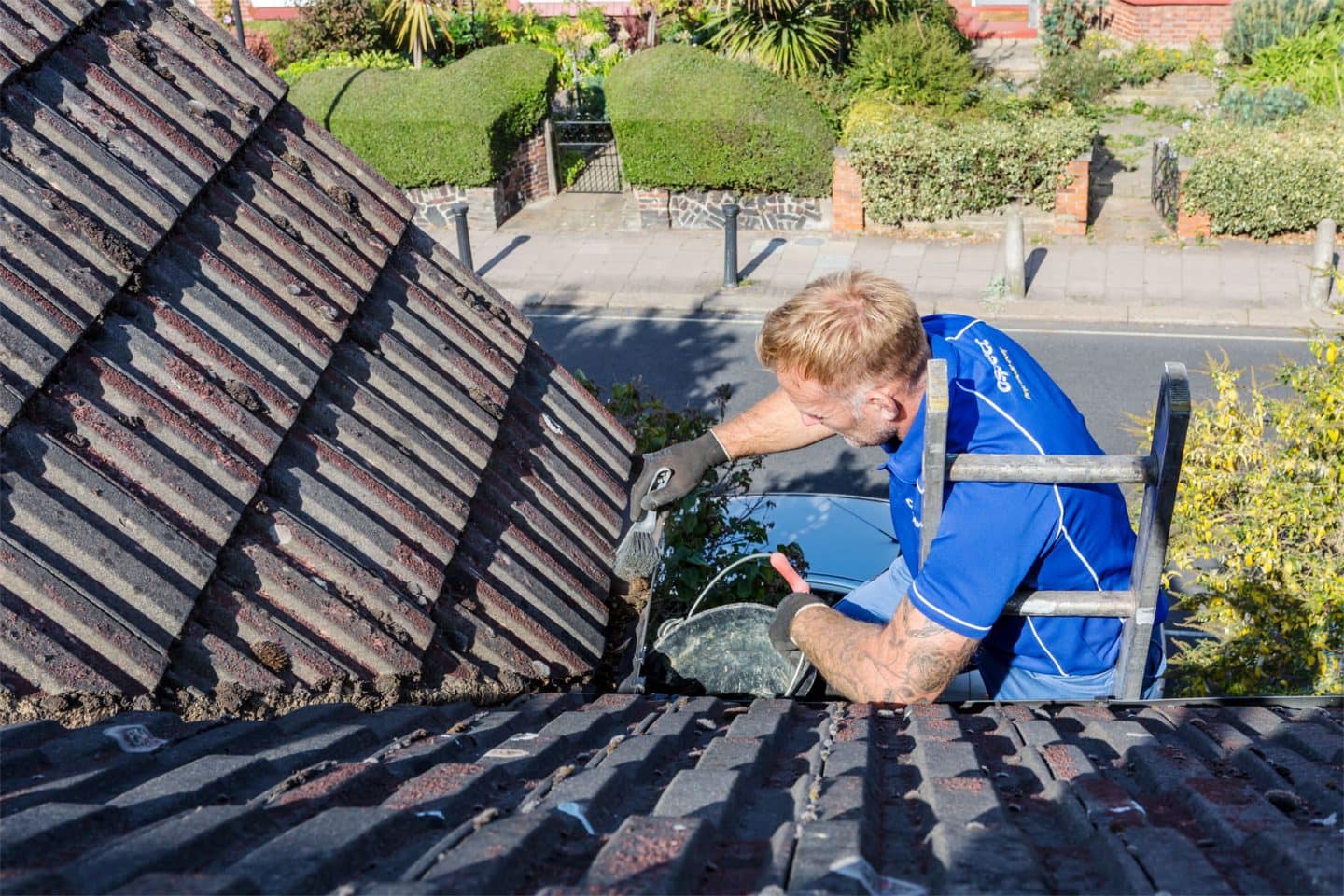
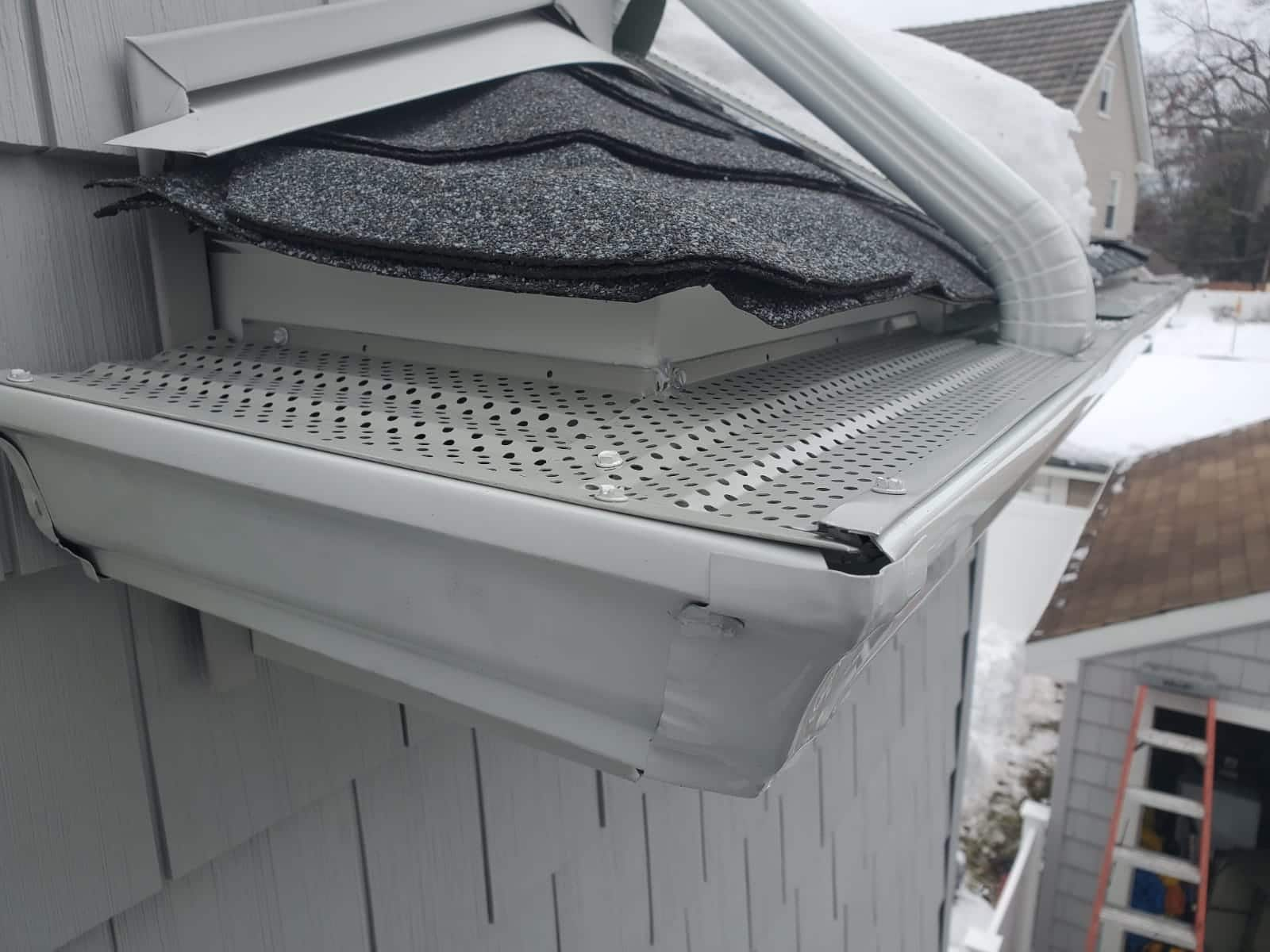
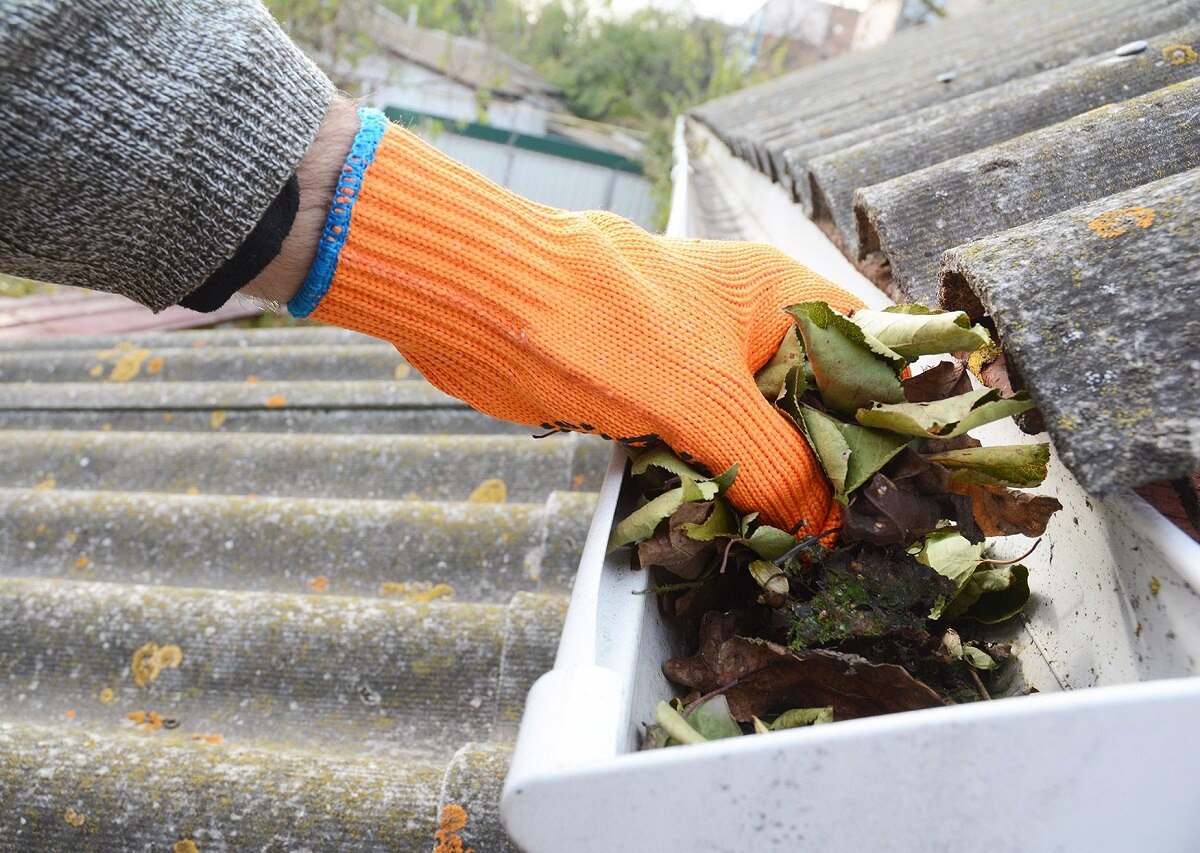
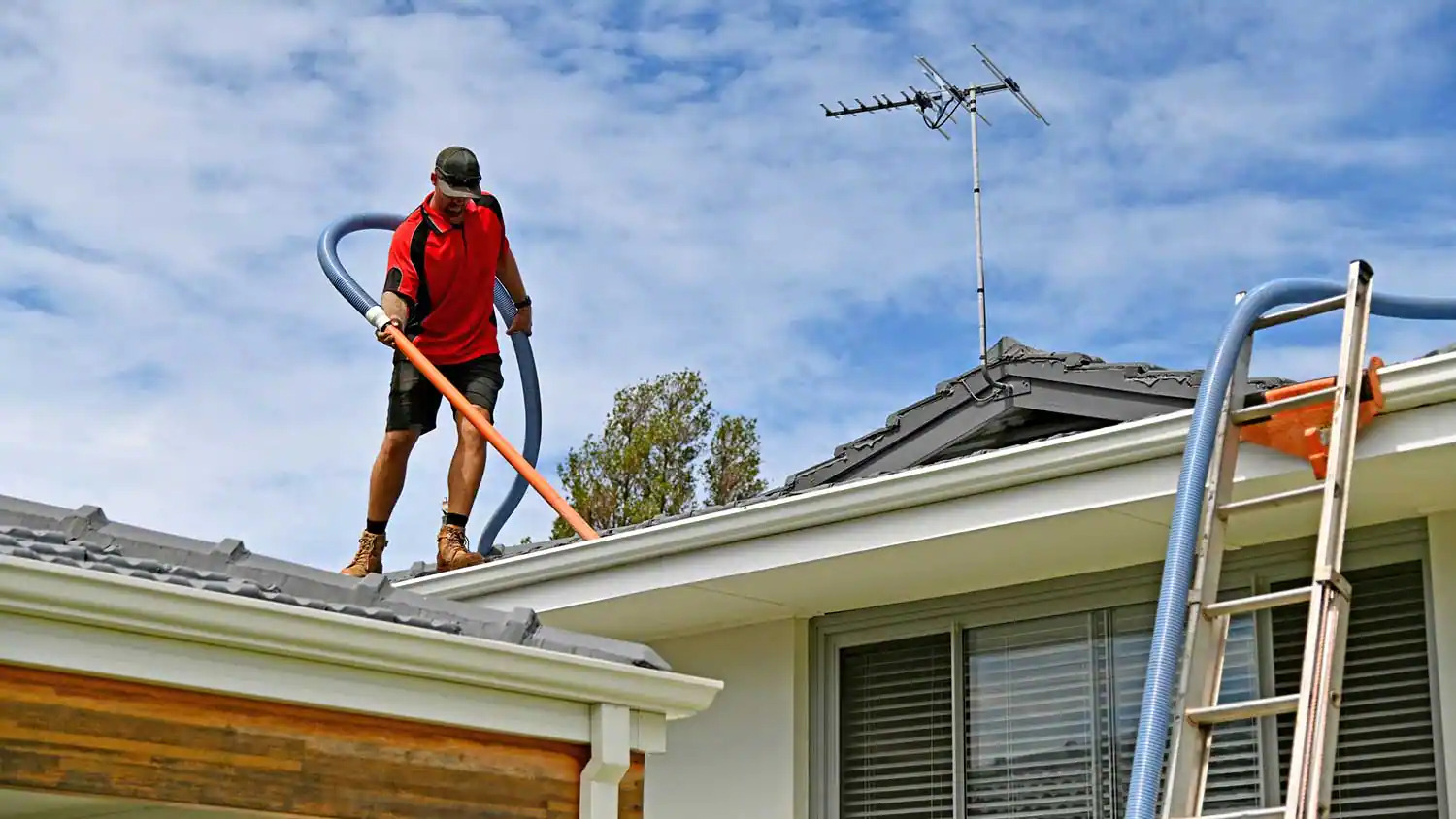
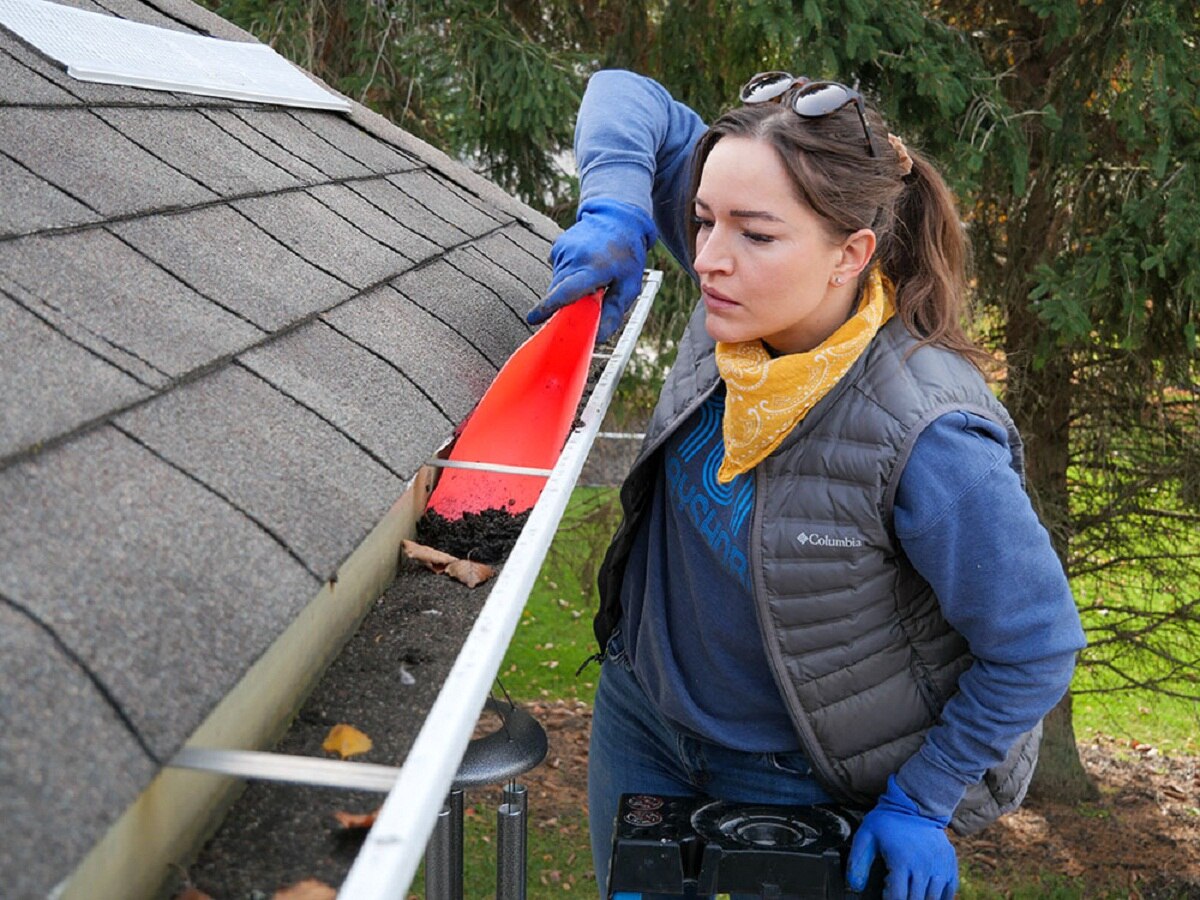
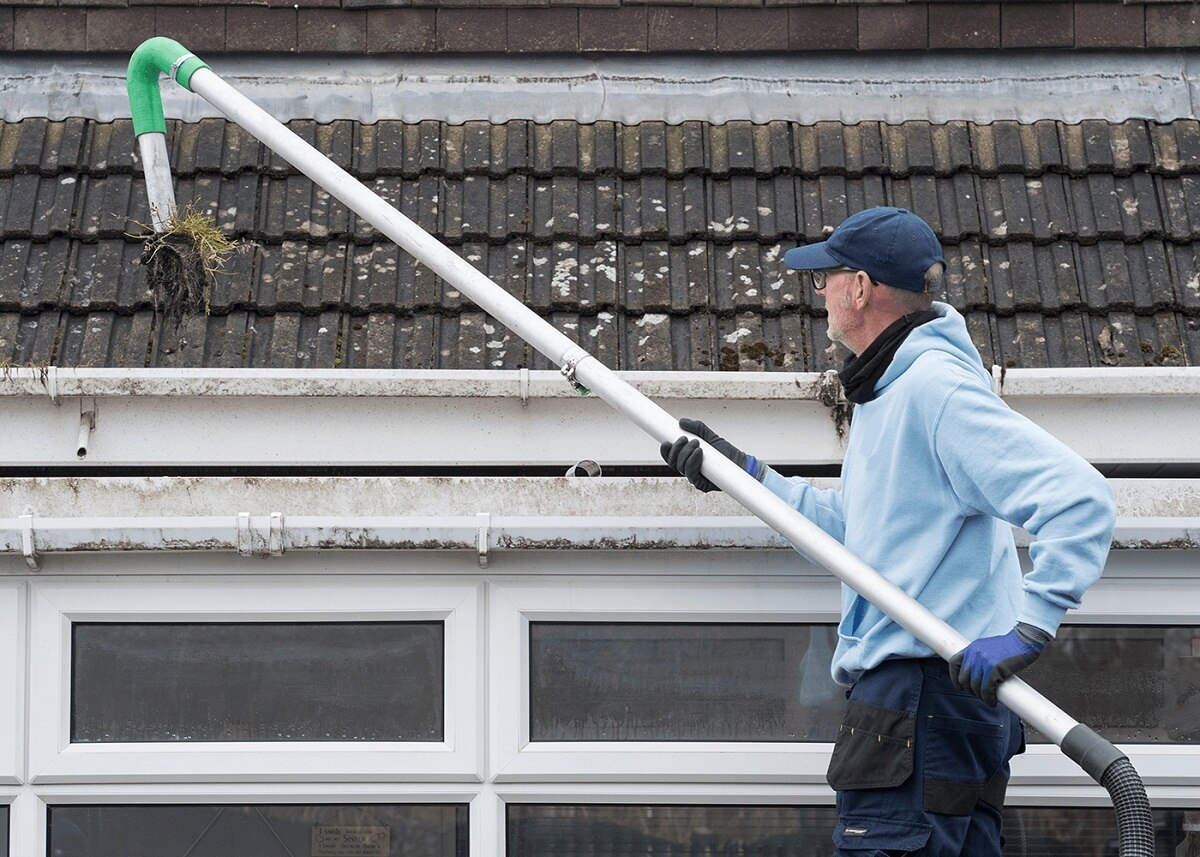
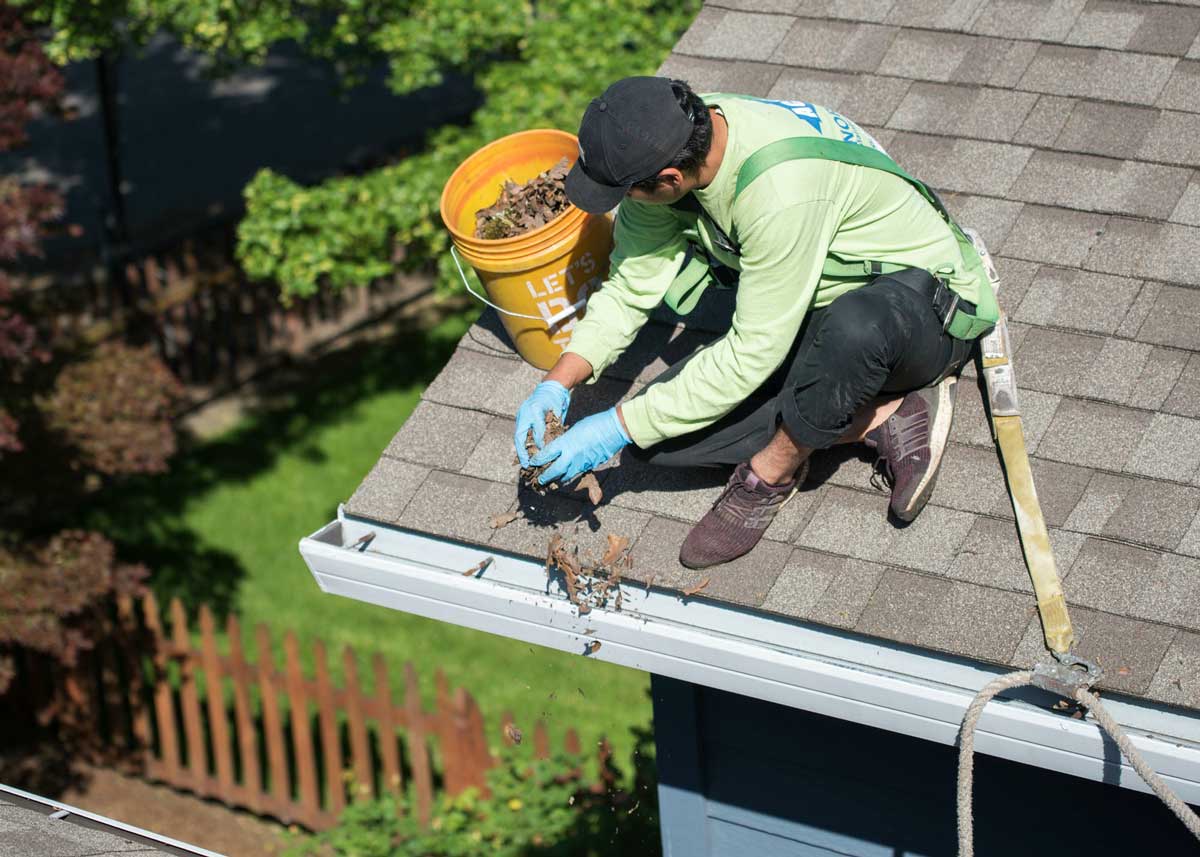
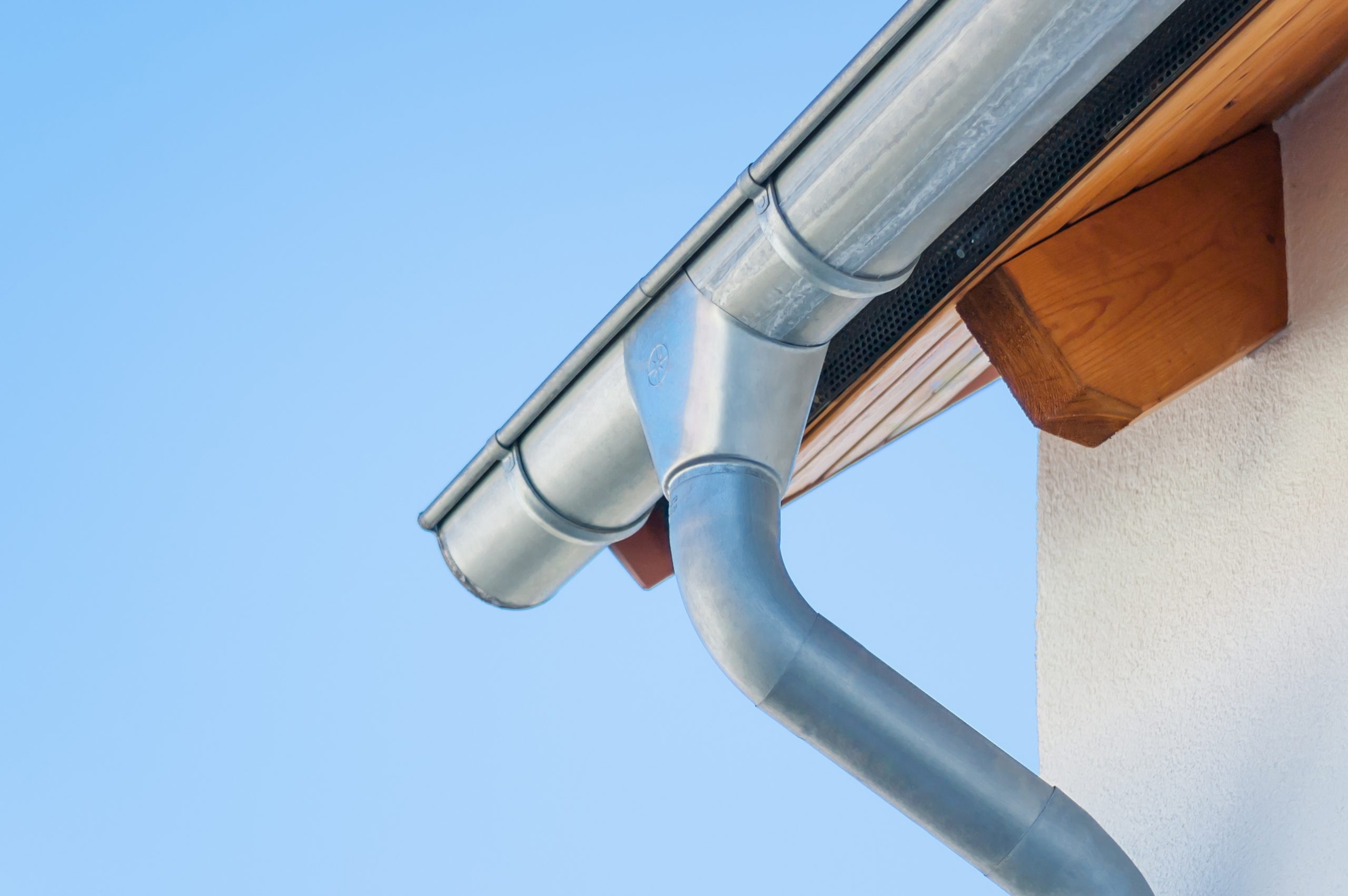
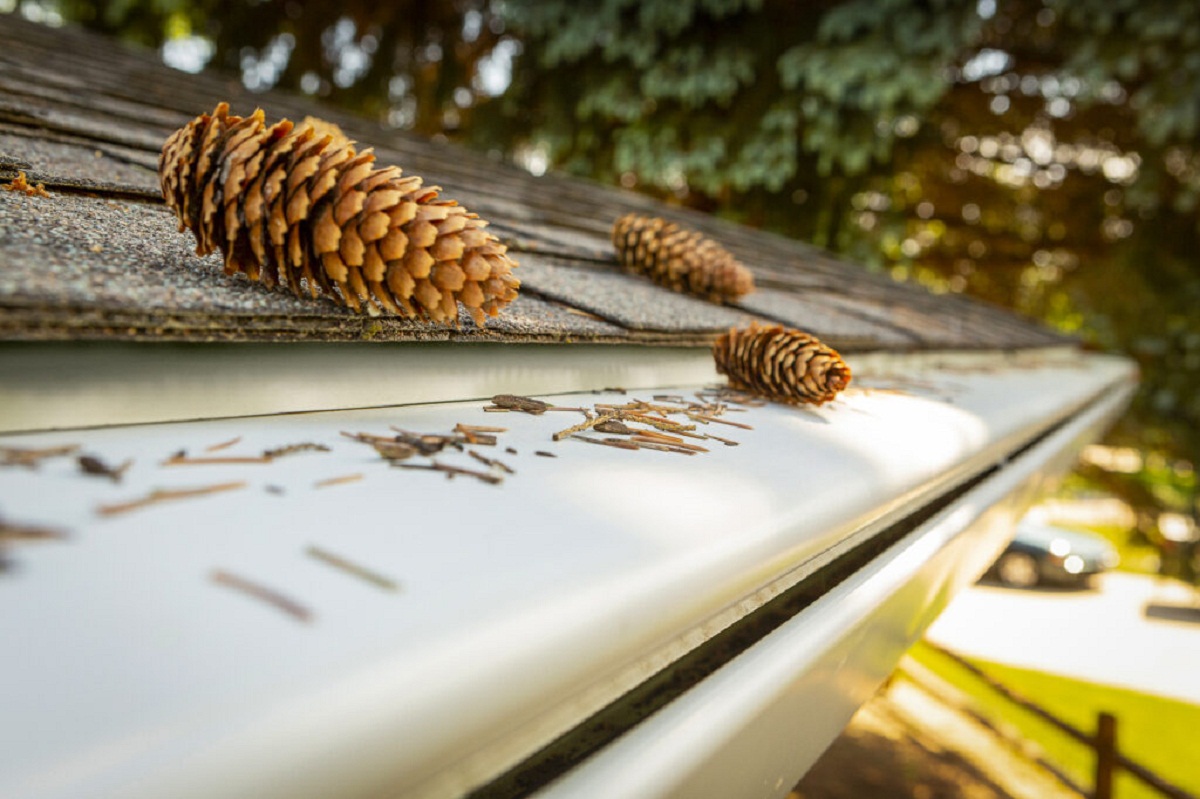
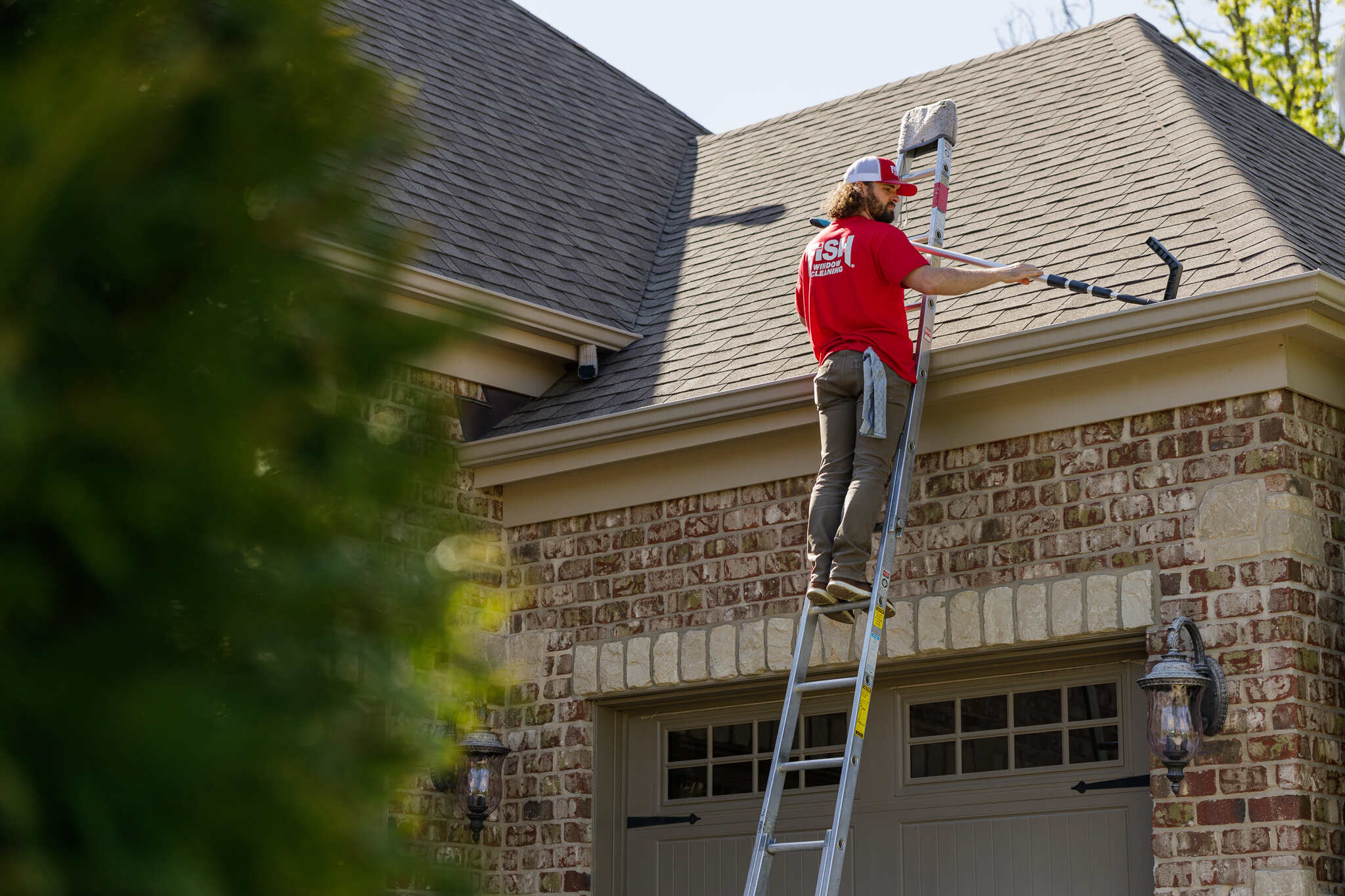
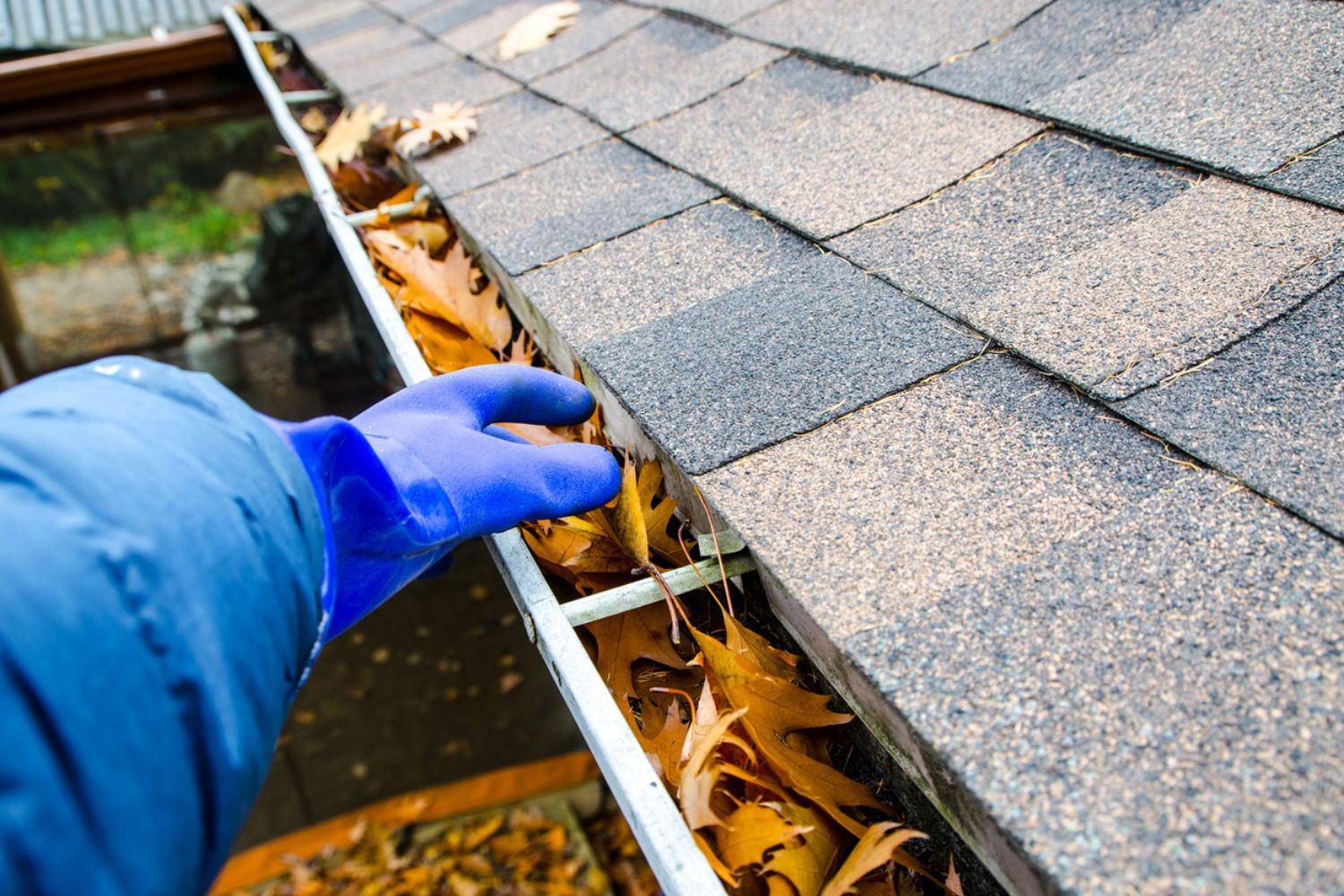

0 thoughts on “How To Clean Out Gutters From The Ground”